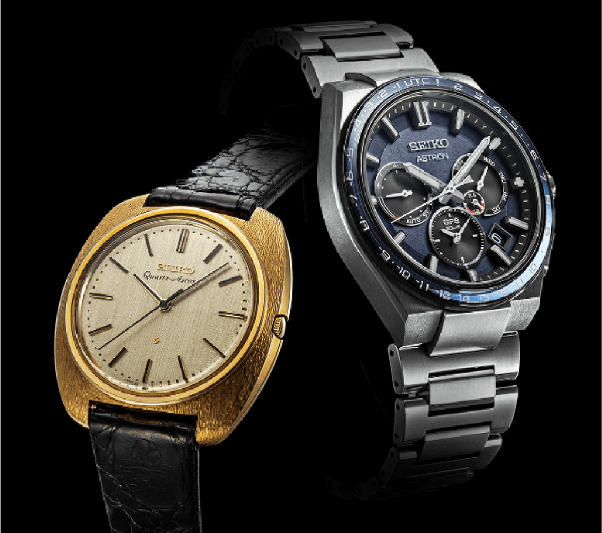When it comes to luxury watches, few names resonate as strongly as Tissot and TAG Heuer. Both brands have carved out significant niches in the world of horology, offering timepieces that blend precision, style, and innovation. However, when it comes to choosing between the two, many watch enthusiasts find themselves in a dilemma. In this article, we will explore the key differences between Tissot vs TAG Heuer, helping you make an informed decision on which brand suits your style and needs. Additionally, we’ll delve into the importance of using a Tissot watch winder to maintain your timepiece in optimal condition.
Tissot vs TAG Heuer: A Brief History
The history of Tissot dates back to 1853 when it was founded by Charles-Félicien Tissot and his son Charles-Émile in Le Locle, Switzerland. From its inception, Tissot has been recognized for its innovation and quality craftsmanship. The brand introduced the first mass-produced pocket watch and was also the first to create a watch made entirely of plastic. Tissot’s reputation for making affordable yet high-quality watches has made it a favorite among both novice collectors and seasoned enthusiasts.
On the other hand, TAG Heuer was established in 1860 by Edouard Heuer in St-Imier, Switzerland. TAG Heuer quickly became known for its precision chronographs and was a pioneer in the development of accurate timekeeping devices for sports, particularly in motor racing. The brand’s affiliation with high-speed sports and its commitment to precision engineering have positioned TAG Heuer as a symbol of performance and luxury.
Design and Aesthetics: Tissot vs TAG Heuer
When comparing Tissot vs TAG Heuer in terms of design and aesthetics, both brands offer distinct styles that cater to different tastes. Tissot is known for its versatile range of designs that appeal to a broad audience. From classic dress watches to sporty models, Tissot watches often feature clean lines, understated elegance, and a focus on functionality. The brand’s ability to blend traditional Swiss watchmaking techniques with modern design elements has earned it a reputation for creating timeless pieces.
TAG Heuer, in contrast, leans towards a more aggressive and sporty design philosophy. The brand’s watches are often bold, with distinctive features such as tachymeter bezels, chronograph functions, and large dials. TAG Heuer watches are designed to make a statement, often reflecting the brand’s deep connection with the world of motorsports. For those who prefer a watch that exudes power and performance, TAG Heuer is the go-to brand.
Performance and Technology: Tissot vs TAG Heuer
Performance and technology are where the differences between Tissot vs TAG Heuer become more pronounced. Tissot has always been at the forefront of integrating new technologies into its timepieces. The brand was among the first to introduce watches with touch-sensitive sapphire crystals, as seen in the Tissot T-Touch series. Tissot also offers a range of watches equipped with automatic movements, solar power, and robust water resistance, making them suitable for various activities.
TAG Heuer takes performance to the next level with its emphasis on precision chronographs and high-tech materials. The brand is renowned for its Calibre series of automatic movements, which offer exceptional accuracy and reliability. TAG Heuer’s watches are often equipped with advanced features such as tourbillons, skeletonized dials, and ceramic bezels, appealing to those who appreciate cutting-edge watchmaking. Furthermore, TAG Heuer’s involvement in sports timing has led to the development of watches that are not only luxurious but also highly functional.
Why a Tissot Watch Winder is Essential
For those who own a Tissot automatic watch, using a Tissot watch winder is crucial for maintaining the accuracy and longevity of the timepiece. An automatic watch relies on the movement of the wearer’s wrist to keep the mainspring wound. If the watch is left unworn for an extended period, it will stop, requiring you to reset the time and date before wearing it again.
A Tissot watch winder eliminates this inconvenience by mimicking the motion of the wrist, ensuring that the watch remains fully wound even when not being worn. This is particularly important for watches with complex movements or those that are worn on a rotational basis. A Tissot watch winder helps distribute the lubricants inside the watch movement evenly, preventing the oils from coagulating and ensuring the watch functions smoothly over time.
Moreover, a Tissot watch winder is designed specifically to meet the winding requirements of Tissot watches, offering customizable settings for turns per day (TPD) and rotation direction. This ensures that your Tissot watch receives the precise winding it needs, without the risk of over-winding or under-winding.
Tissot vs TAG Heuer: Which Should You Choose?
Deciding between Tissot vs TAG Heuer ultimately comes down to personal preference, budget, and the intended use of the watch. If you are looking for a versatile, high-quality watch that offers a balance of tradition and innovation, Tissot may be the ideal choice. Tissot watches are often more affordable, making them accessible to a wider audience without compromising on Swiss craftsmanship.
On the other hand, if you desire a watch that embodies performance, luxury, and cutting-edge technology, TAG Heuer is likely to be more appealing. TAG Heuer watches are designed for those who appreciate precision engineering and are willing to invest in a timepiece that reflects their passion for high-speed sports and luxurious living.
In conclusion, both Tissot and TAG Heuer offer exceptional watches that cater to different segments of the market. Whether you choose a Tissot or a TAG Heuer, you are investing in a timepiece that represents the pinnacle of Swiss watchmaking. And if you opt for a Tissot automatic watch, don’t forget to pair it with a Tissot watch winder to keep your timepiece in perfect working order.
Keep an eye for more news & updates on Gossips.Blog!




